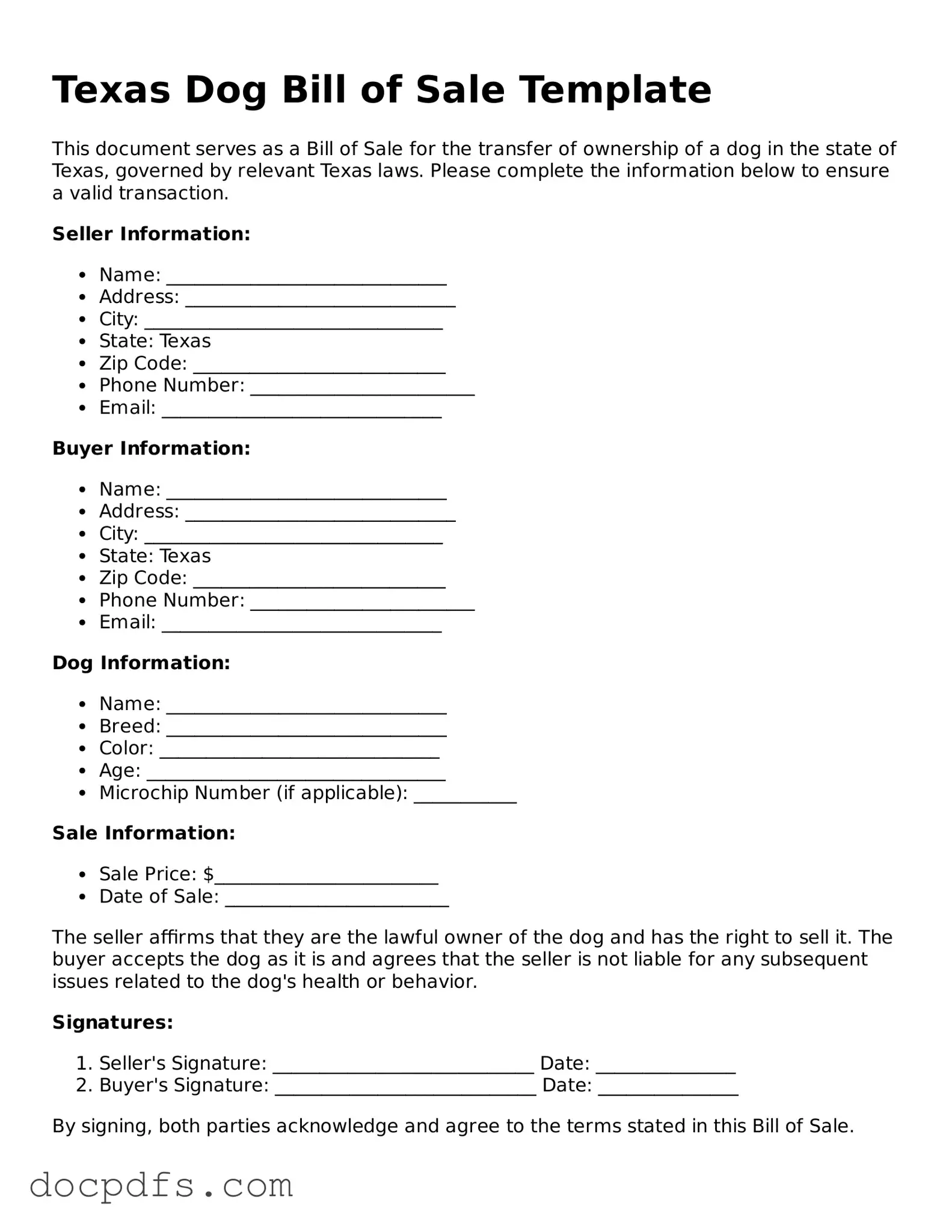Free Texas Dog Bill of Sale Form
The Texas Dog Bill of Sale form is a legal document used to transfer ownership of a dog from one party to another in Texas. This form outlines essential details about the dog, including its breed, age, and any health information. Utilizing this document helps ensure a smooth transaction and protects the rights of both the seller and the buyer.
Open Dog Bill of Sale Editor Now
